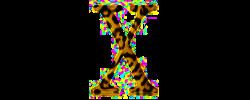Developer Apple Inc. Platforms PowerPC | OS family Macintosh
Unix-like | |
 | ||
Source model Closed source (with open source components) Released to
manufacturing August 24, 2002; 14 years ago (2002-08-24) Latest release 10.2.8 / October 3, 2003; 13 years ago (2003-10-03) | ||
Mac OS X Jaguar, version 10.2, is the third major release of Mac OS X (now named macOS), Apple's desktop and server operating system. It superseded Mac OS X 10.1 and preceded Mac OS X Panther. The operating system was released on August 23, 2002 either for single-computer installations, and in a “family pack,” which allowed five installations on separate computers in one household. The operating system was generally well received by most Mac users as a large step forward in the areas of stability, general speed enhancements, compatibility with other flavors of Unix and the lineup of both graphical and terminal applications available; however, many critics, such as Amazon.com users, still claimed that significant user interface speed issues existed and that the operating system was still a big step down from Mac OS 9.
Contents
Jaguar was the first Mac OS X release to publicly use its code name in marketing and advertisements.
System requirements
Mac OS X Jaguar required a PowerPC G3 or G4 CPU and 128 MB of RAM. Special builds were released for the first PowerPC G5 systems released by Apple.
New and changed features
Mac OS X Jaguar introduced many new features to the Mac OS that remain to this day, including MPEG-4 support in QuickTime, Address Book, Inkwell for handwriting recognition, and Apple Mail. It also included the first release of Apple's Zeroconf implementation, Rendezvous (later referred to as Bonjour), which allows devices over a network to discover each other and display available services to the user, such as file sharing, shared scanners, and printers.
Mac OS X Jaguar Server 10.2.2 added journaling to HFS Plus, the native Macintosh file system, to add increased reliability and data recovery features. This was later added to the standard Mac OS X in version 10.3, Panther.
Quartz Extreme debuted in Jaguar, used to composite graphics directly on the video card, without the use of software to composite windows. The technology allotted the task of drawing the 3D surface of windows to the video card, rather than to the CPU, to increase interface responsiveness and performance.
Universal Access was added to allow the Macintosh to be usable by disabled computer users.
The user interface of the Mac OS was also amended to add search features to the Finder using the updated Sherlock 3.
Internally, Jaguar also added the Common Unix Printing System (also known as CUPS), a modular printing system for Unix-like operating systems, and improved support for Microsoft Windows networks using the open-source Samba as a server for the SMB remote file access protocol and a FreeBSD-derived virtual file system module as a client for SMB.
The famous Happy Mac that had greeted Mac users for almost 18 years during the Macintosh startup sequence was replaced with a large grey Apple logo with the introduction of Mac OS X Jaguar.
Marketing
In October 2002, Apple offered free copies of Jaguar to all U.S K-12 teachers as part of the "X For Teachers" program. Teachers who wanted to get a copy simply had to fill out a form and a packet containing Mac OS X installation discs and manuals was shipped to the school where they worked.
Jaguar marked the first Mac OS X release which publicly used its code name as both a marketing ploy and as an official reference to the operating system. To that effect, Apple replaced the packaging for Mac OS X with a new jaguar-themed box.
Mac OS X 10.2 was never officially referred to as Jaguar in the United Kingdom due to an agreement with the car manufacturer Jaguar, although boxes and CDs still bore the Jaguar-fur logo.
Starting with Jaguar, OS X releases were given a feline-related marketing name upon announcement until the introduction of OS X Mavericks in June 2013, at which point OS X releases began to be named after locations in California. OS X releases are now also referred to by their marketing name, in addition to version numbers.
Release history
Mac OS X 10.2.7 (codenames Blackrider, Smeagol) was only available to the new Power Mac G5s and aluminum PowerBook G4s released before Mac OS X Panther. Officially, it was never released to the general public.
Mac OS X 10.2.8 is the last version of Mac OS X officially supported on the ‘beige G3’ desktop and minitower systems, as well as the PowerBook G3 Series (1998) also known as Wallstreet/PDQ; though later releases can be run on such Macs with the help of unofficial, unlicensed, and unsupported third-party tools such as XPostFacto.
